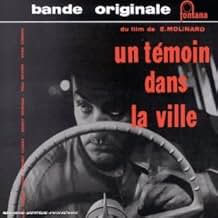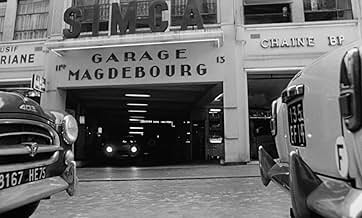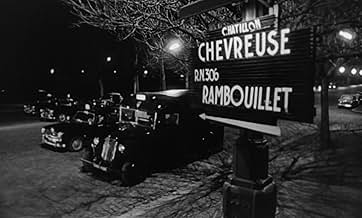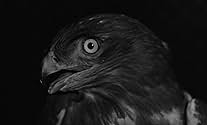Ajouter une intrigue dans votre langueSeeking vengeance on his wife's former lover and assassin, a man sets in motion a string of killings.Seeking vengeance on his wife's former lover and assassin, a man sets in motion a string of killings.Seeking vengeance on his wife's former lover and assassin, a man sets in motion a string of killings.
- Réalisation
- Scénario
- Casting principal
Franco Fabrizi
- Lambert - le radio-taxi de nuit
- (as Franco Fabrizzi)
Martine Messager
- Une standardiste
- (as Martine Reichenbach)
Avis à la une
Excellent, very entertaining cat-and-mouse thriller, as an avenging husband (the incomparable Lino Ventura) tries to kill a witness to a murder. In its spare monochrome Decae photography, cool jazz soundtrack, nocturnal settings, focus on elaborate plot mechanics, and privileging of an unlovely outsider, the film is reminiscent of Melville. The 'villain' is only responding to a vicious circle of transgression and injustice, and his plight becomes an allegory for the lonely outsider locked out of a conformist society. The rigorous purity of Melville's aesthetic is softened by romance and comedy, but these only intensify the sense of impending tragedy.
While leaving the scene of his crime, a murderer encounters a cab driver who will be able to identify him. For the rest of the film, the killer hunts down the driver, who becomes a character in the story.
No spoilers for this one, with terrific driving sequences and chases in night-time Paris and some colorful characters. Ventura--who must act without much dialog--is very good, as are Franco Fabrizzi and Sandra Milo (both of whom appear significantly in Fellini films)
No spoilers for this one, with terrific driving sequences and chases in night-time Paris and some colorful characters. Ventura--who must act without much dialog--is very good, as are Franco Fabrizzi and Sandra Milo (both of whom appear significantly in Fellini films)
Having cut his teeth on 'Le dos au mur' and 'Les femmes disparaissent', both of which are 'interesting', Edouard Molinaro impresses with this excellent revenge thriller adapted from the novel of the splendid duo Boileau and Narcejac.
Oodles of atmospheric night scenes here and who better to create them than cinematographer Henri Decae. Molinaro has also enlisted as composer the tenor saxophonist Barney Wilens who collaborated with Miles Davis on 'l'ascenseur pour l'echaffaud'. The editing by Robert and Monique Isnardon is especially effective.
This also marks the first major role for Lino Ventura who had been steadily climbing the ranks since being discovered by Jacques Becker. Apparently he was offered the choice of playing the assassin or the taxi-driving witness and his decision to play the former proved to be an astute career move. He is simply superlative in the role of a man who exacts revenge for the murder of his wife but thereby embarks on a course from which there is no return. The hunter becomes the hunted and Ventura succeeds in evincing our sympathy.
The part of the witness went to Franco Fabrizzi and that of his girlfriend to the always appealing Sandra Milo. Other performances to note are those of Robert Dalban and Micheline Luccione.
The milieu, routine and camaraderie of the taxi drivers are wonderfully depicted and the final chase sequence is thrilling.
The history of cinema is littered with films whose promise on paper failed to be realised on screen but here everything gels to produce a tense and gripping piece which is an absolute must for devotees of Film Noir.
Faking suicide, a playboy industrialist (Jacques Berthier)calculatingly murders his mistress, and the victim's husband (Lino Ventura) equally pitiless revenge excitingly engenders an increasingly desperate sortie through the crepuscular streets of Paris. Director Édouard Molinaro's electric, stunning invocation of moody gallic noir makes for extraordinarily compelling cinema, maestro Henri Decae's ominously shadow-slaked photography draws you deeply into Molinaro's mesmerisingly monochromatic milieu of midnight misanthropy.
Razor-edged cat-and-mouse crime thriller 'Witness in The City' is honed to deadly efficacy, the bulk of the film's undeniable allure due solely to magnetic film icon Lino Ventura's steely charisma. Granted, I am massively biased, since Lino Ventura is one my favourite actors, but, in my opinion, no one stalked the dingy backstreets of not-so-gay Paris with the inimitable rigour of Mr. Ventura! The thrilling performances, exquisite, frequently dynamic film making, and exemplary text strongly suggests Witness in The City be witnessed by all those who savour superlative genre film making.
Razor-edged cat-and-mouse crime thriller 'Witness in The City' is honed to deadly efficacy, the bulk of the film's undeniable allure due solely to magnetic film icon Lino Ventura's steely charisma. Granted, I am massively biased, since Lino Ventura is one my favourite actors, but, in my opinion, no one stalked the dingy backstreets of not-so-gay Paris with the inimitable rigour of Mr. Ventura! The thrilling performances, exquisite, frequently dynamic film making, and exemplary text strongly suggests Witness in The City be witnessed by all those who savour superlative genre film making.
'Un témoin dans la ville', the third feature film made in 1959 by Édouard Molinaro, begins with a scene of a murder on a train that seems taken from an Alfred Hitchcock film and ends with an anthological and original scene. Between them, in an hour and a half, we are watching one of the best French noir films and the film that launched and consolidated the character of the lone criminal, embodied by Lino Ventura here and in several other films, a character that would also be taken over by other actors and directors (French or not), some among the best.
The original script belongs to the couple of writers Boileau - Narcejac, the very successful authors of the novels of the 'noir' genre in France. Many of their books have been adapted to screens (including by Hitchcock), but here they themselves wrote the screenplay together with Gérard Oury. Ancelin, the main hero of the film commits a premeditated murder. If there are justified crimes, this would be one of them, because the victim is the one who had killed Ancelin's wife and then escaped the legal consequences because of the 'benefit of the doubt'. The crime, however, has a witness, a taxi driver who had been called by the victim a few minutes before he was killed. Ancelin doesn't know what to do. He knows that he risks going to prison for the rest of his life or maybe even to the scaffold, but he is not a born criminal and is not capable of deciding to eliminate the witness. In fact, we do not see Ancelin commit a second murder in the film. The hunter becomes the pray, as the cab driver fraternity rallies to protect their threatened colleague. The film becomes the story of an ordinary man's slide into crime and death.
That in many other cases, the quality of the film resides in the ambiguity. Ancelin is guilty of a morally 'excusable' crime (he avenges his wife and takes out her murderer who escaped justice) and it is not clear whether he intended to commit other crimes or perhaps just convince the witness to keep quiet. Everything is filmed in a Paris at night, in constant motion. Radio taxis seem to predict today's super-connected world, and scenes from the lives of taxi drivers, with the love story between taxi driver Lambert and dispatcher Liliane provide a counterpoint to the dark plot of Ancelin's revenge. Édouard Molinaro is a contemporary of the New Wave and uses some of its inventions (the mobile camera, long shots interspersed with short ones and nervously edited, Paris as a background for love stories or crimes). But he was a director who had the audience in mind, and not himself, like the masters of the New Wave. In a few years he would direct some of the best comedies with Louis de Funès. The jazz-style soundtrack belongs to Barney Wilen, and the cinematography to Henri Decaë, who would also film the masterpiece of the 'lone criminal' genre - Henri Melville's 'Le Samouraï'. Last but not least, we have to talk about Lino Ventura - the actor who carries the film on his shoulders, in the first of his great roles as a lonely hero - positive, negative or ambiguous. I invite you to watch or re-watch the film to decide which category Ancelin belongs to. It will be a satisfying viewing.
The original script belongs to the couple of writers Boileau - Narcejac, the very successful authors of the novels of the 'noir' genre in France. Many of their books have been adapted to screens (including by Hitchcock), but here they themselves wrote the screenplay together with Gérard Oury. Ancelin, the main hero of the film commits a premeditated murder. If there are justified crimes, this would be one of them, because the victim is the one who had killed Ancelin's wife and then escaped the legal consequences because of the 'benefit of the doubt'. The crime, however, has a witness, a taxi driver who had been called by the victim a few minutes before he was killed. Ancelin doesn't know what to do. He knows that he risks going to prison for the rest of his life or maybe even to the scaffold, but he is not a born criminal and is not capable of deciding to eliminate the witness. In fact, we do not see Ancelin commit a second murder in the film. The hunter becomes the pray, as the cab driver fraternity rallies to protect their threatened colleague. The film becomes the story of an ordinary man's slide into crime and death.
That in many other cases, the quality of the film resides in the ambiguity. Ancelin is guilty of a morally 'excusable' crime (he avenges his wife and takes out her murderer who escaped justice) and it is not clear whether he intended to commit other crimes or perhaps just convince the witness to keep quiet. Everything is filmed in a Paris at night, in constant motion. Radio taxis seem to predict today's super-connected world, and scenes from the lives of taxi drivers, with the love story between taxi driver Lambert and dispatcher Liliane provide a counterpoint to the dark plot of Ancelin's revenge. Édouard Molinaro is a contemporary of the New Wave and uses some of its inventions (the mobile camera, long shots interspersed with short ones and nervously edited, Paris as a background for love stories or crimes). But he was a director who had the audience in mind, and not himself, like the masters of the New Wave. In a few years he would direct some of the best comedies with Louis de Funès. The jazz-style soundtrack belongs to Barney Wilen, and the cinematography to Henri Decaë, who would also film the masterpiece of the 'lone criminal' genre - Henri Melville's 'Le Samouraï'. Last but not least, we have to talk about Lino Ventura - the actor who carries the film on his shoulders, in the first of his great roles as a lonely hero - positive, negative or ambiguous. I invite you to watch or re-watch the film to decide which category Ancelin belongs to. It will be a satisfying viewing.
Le saviez-vous
- AnecdotesFilmed with the co-operation of the 400 radio taxi drivers of Paris.
- ConnexionsReferenced in La dolce vita (1960)
- Bandes originalesTémoin Dans La Ville
Written by Barney Wilen
Performed by Barney Wilen, Kenny Clarke, Kenny Dorham, Paul Rovère and Duke Jordan (as Barney Wilen Quintet)
Meilleurs choix
Connectez-vous pour évaluer et suivre la liste de favoris afin de recevoir des recommandations personnalisées
- How long is Witness in the City?Alimenté par Alexa
Détails
- Date de sortie
- Pays d’origine
- Langues
- Aussi connu sous le nom de
- Witness in the City
- Lieux de tournage
- Jardin d'acclimatation, Bois de Boulogne, Paris 16, Paris, France(Ancelin flees into zoo)
- Sociétés de production
- Voir plus de crédits d'entreprise sur IMDbPro
- Durée1 heure 29 minutes
- Couleur
- Mixage
- Rapport de forme
- 1.66 : 1
Contribuer à cette page
Suggérer une modification ou ajouter du contenu manquant

Lacune principale
By what name was Un témoin dans la ville (1959) officially released in Canada in English?
Répondre





























